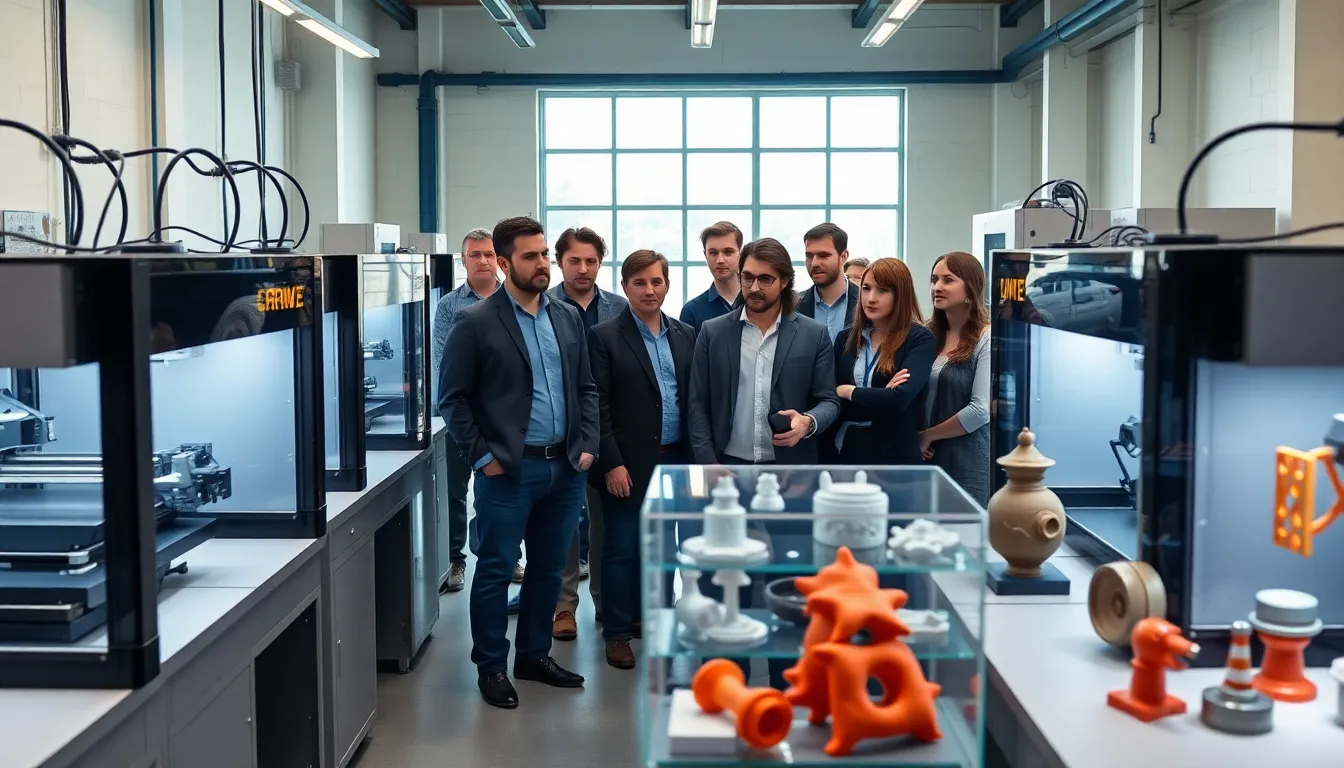Table of Contents
ToggleEver thought about how carbon fiber 3D printing could change the game? Picture this: a world where strong, lightweight materials are at your fingertips, transforming industries faster than you can say ‘layer by layer.’ Whether you’re a hobbyist, an engineer, or just someone who enjoys a good techie discussion, understanding the ins and outs of this innovative technology can leave you both impressed and intrigued. So buckle up, this journey into the realm of carbon fiber 3D printing promises to be both educational and lighthearted.
What Is Carbon Fiber 3D Printing?

Carbon fiber 3D printing combines the high-strength properties of carbon fiber with the adaptability of 3D printing technology. In simple terms, it allows engineers and designers to fabricate objects with a blend of polymers and carbon fiber filaments, leading to incredibly strong but lightweight components. Think of it as taking a perfectly cooked pasta, a bit rigid and dependable, yet flexible in application, and throwing in a dash of Italian herbs to elevate it to the gourmet level.
This process utilizes various printing methods to create layers of carbon fiber and resin, gradually building up a durable structure. The results? Products that withstand high-stress environments, while remaining easy to produce. Whether it’s for aerospace, automotive parts, or even sporting equipment, carbon fiber 3D printing is changing the landscape of manufacturing.
The Benefits of Carbon Fiber in 3D Printing
When it comes to the benefits of carbon fiber in 3D printing, the list is as impressive as the materials themselves.
- Strength-to-Weight Ratio: Carbon fiber has a remarkable strength-to-weight ratio, making it an ideal choice for applications where weight savings are crucial. Think drones or high-performance bicycles.
- Customization: The technology allows for intricate designs that traditional manufacturing methods can’t easily achieve. Customers can get tailored solutions without the hefty price tag or long lead times.
- Cost-Efficiency: While carbon fiber itself can be expensive, when produced through 3D printing, it often leads to reduced material waste and cheaper final products. It’s like finding a luxury restaurant that serves gourmet meals at fast-food prices.
- Sustainability: Using this method often means fewer resources are wasted, supporting greener manufacturing practices.
In sum, carbon fiber 3D printing doesn’t just promise better products: it also delivers them more efficiently than ever before.
Applications of Carbon Fiber 3D Printing
The versatility of carbon fiber 3D printing opens up a world of applications across various industries. Let’s explore some exciting examples:
- Aerospace: From drones to satellite components, lightweight structures are essential. Carbon fiber 3D printing helps aerospace engineers create both robust and lightweight parts, ensuring that every gram counts in flight.
- Automotive: Performance vehicles are increasingly leveraging carbon fiber parts to enhance speed and durability. Think of it as the Ferrari of the 3D printing world.
- Medical Devices: Custom prosthetics and orthopedic implants demand accuracy. Carbon fiber technologies allow for bespoke solutions that improve the quality of life for countless patients.
- Sports Equipment: Athletes benefit too. Gear made from carbon fiber is not only lighter but also tailored for optimal performance, whether in cycling or competitive racing.
The applications are as vast as the imagination allows, proving that carbon fiber 3D printing is more than just a technological novelty.
Technologies Used in Carbon Fiber 3D Printing
Technological advancements have paved the way for the rise of carbon fiber 3D printing. Various methods are utilized, each bringing its own unique advantages:
- Fused Deposition Modeling (FDM): One of the most common methods, it works by melting thermoplastics mixed with carbon fiber filaments. This method ensures strong layers while keeping production relatively simple.
- Continuous Filament Fabrication (CFF): This technique takes a step further by integrating continuous strands of carbon fiber into the print, enhancing strength significantly compared to standard FDM.
- Stereolithography (SLA): A bit less typical for carbon fiber, SLA focuses on resin-based printing and is recognized for its incredible detail. Some newer methods combine it with carbon-infused resins for strength.
- Selective Laser Sintering (SLS): This method uses a laser to fuse powdered materials. The fusion of carbon fiber and nylon leads to parts that are both tough and lightweight.
Each technology has its specific use cases, offering manufacturers a spectrum of choices depending on their needs.
Challenges and Limitations of Carbon Fiber 3D Printing
Even though its advantages, carbon fiber 3D printing isn’t without challenges. Here are a few hurdles that manufacturers may encounter:
- Cost of Materials: High-quality carbon fiber filaments can be quite expensive, which may deter some businesses, especially smaller ones.
- Printing Time: Depending on the complexity and size of the part, printing can be time-consuming. Rushing through this process can lead to compromised quality.
- Technical Skill: Operating advanced 3D printers and understanding the nuances of carbon fiber materials often require a certain level of expertise.
- Post-Processing: Parts made using carbon fiber require additional finishing processes, which might include sanding or additional coating to achieve the desired surface finish.
While these limitations exist, ongoing advancements in technology are working to mitigate many of these issues.
Future Trends in Carbon Fiber 3D Printing
Looking toward the future, several trends are shaping the evolution of carbon fiber 3D printing:
- Increased Automation: As technology advances, more automated solutions are expected to emerge, streamlining the production process and reducing costs.
- Better Material Innovation: Researchers are continually striving for enhanced carbon fiber compositions that can further improve performance and decrease costs.
- Integration with AI: Imagine AI optimizing the printing process dynamically. This could lead to even greater efficiency in production.
- Broader Adoption: As more industries recognize the benefits, an expanded embrace of carbon fiber 3D printing in various manufacturing sectors can be anticipated.
The horizon looks bright for this innovative approach, promising exciting developments in manufacturing.




